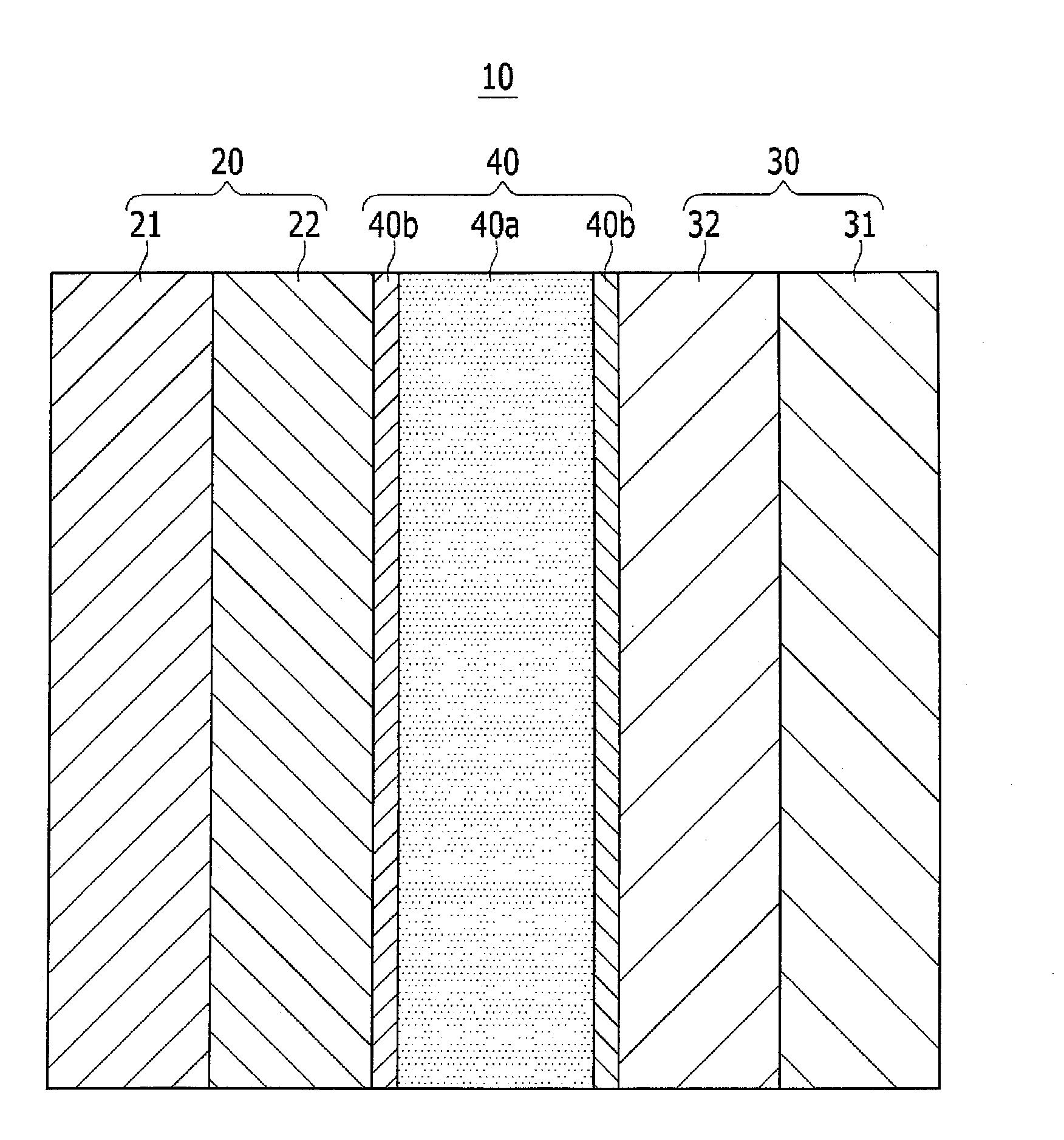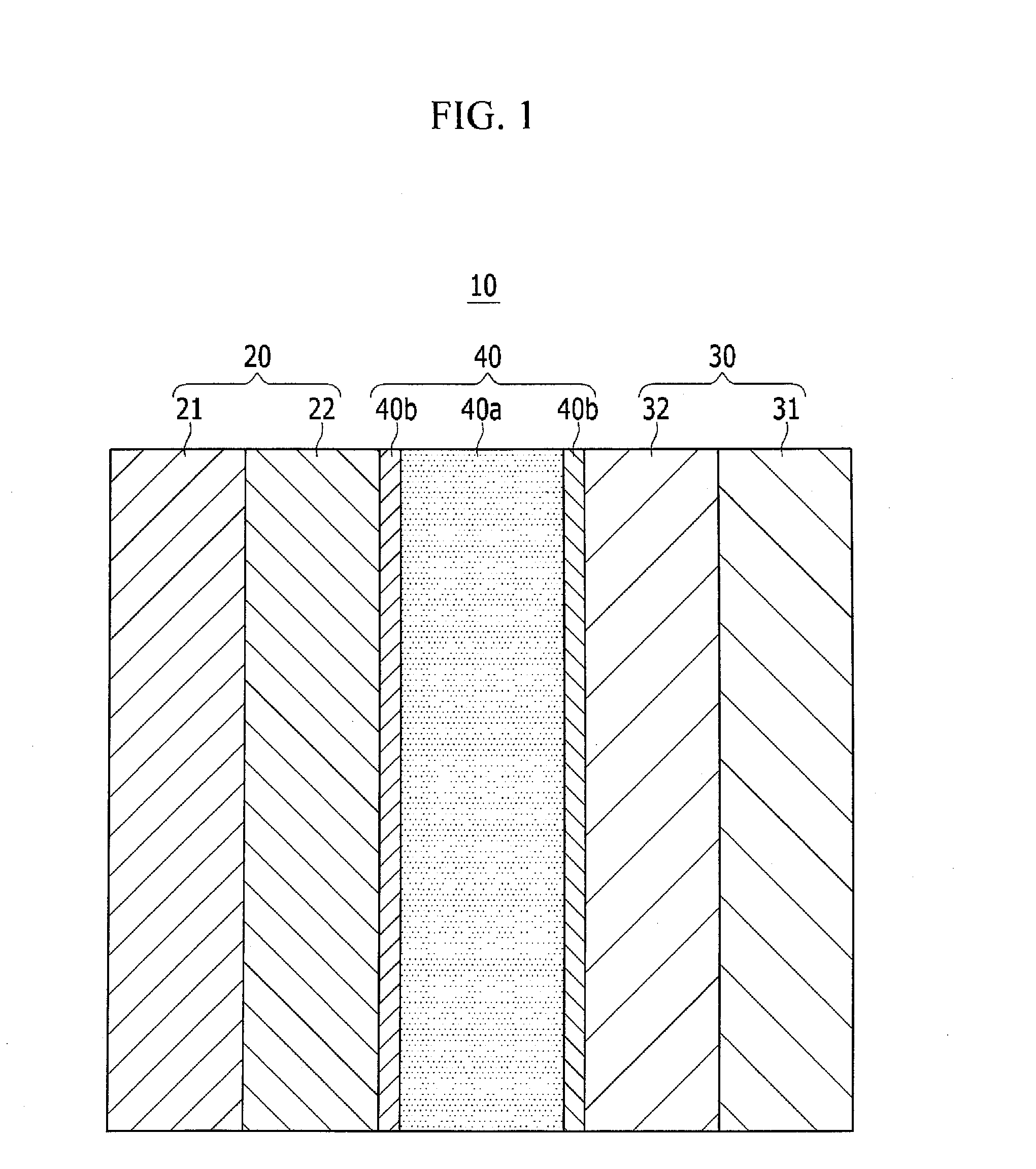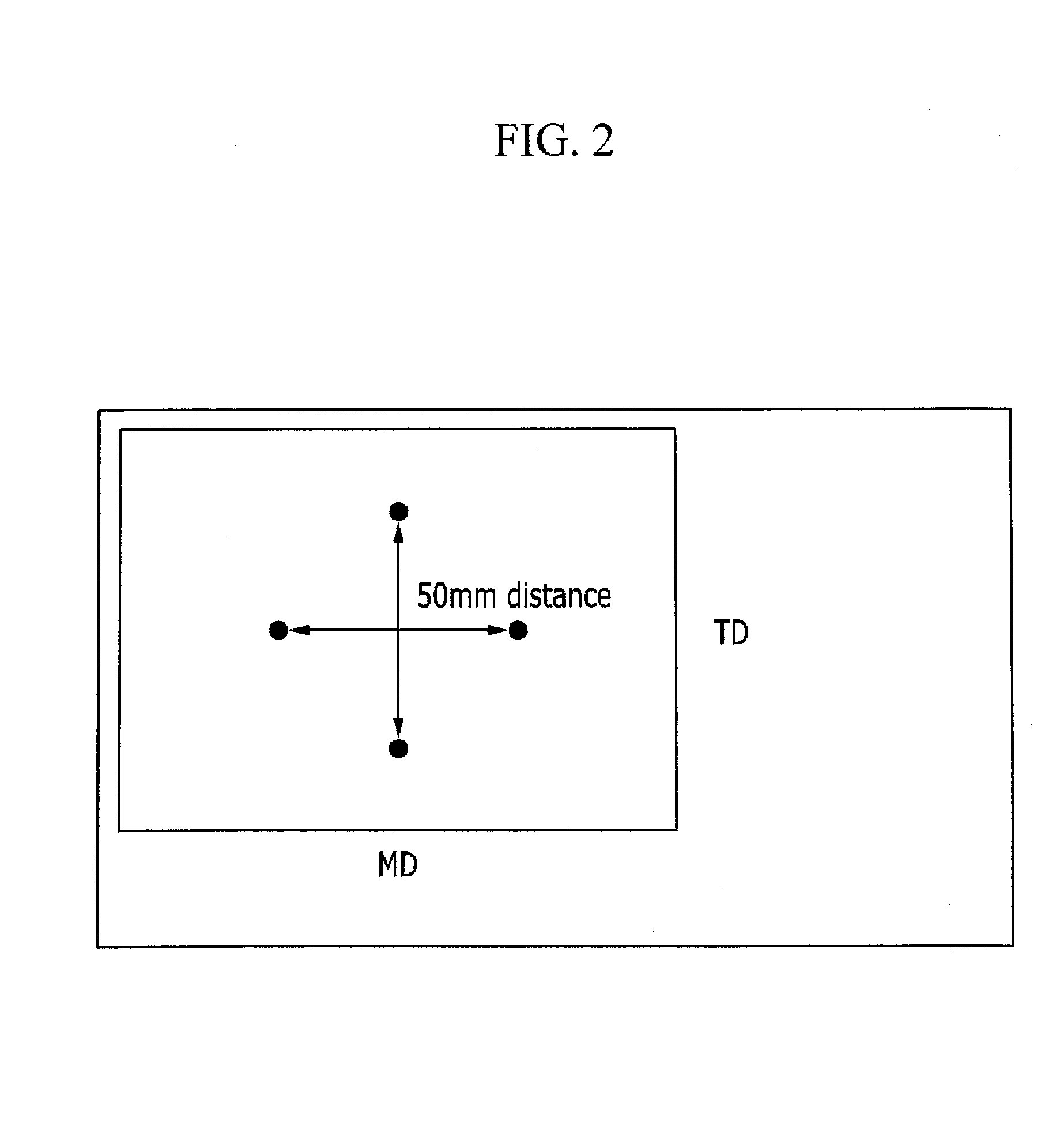Separator for rechargeable battery and rechargeable battery including the same
- Summary
- Abstract
- Description
- Claims
- Application Information
AI Technical Summary
Benefits of technology
Problems solved by technology
Method used
Image
Examples
first embodiment
Structure of Rechargeable Lithium Ion Battery
[0058]Referring to FIG. 1, a structure of a rechargeable lithium ion battery 10 according to a first embodiment will be described in more detail.
[0059]The rechargeable lithium ion battery 10 includes a positive electrode 20, a negative electrode 30, a separator 40, and a non-aqueous electrolyte.
[0060]The rechargeable lithium battery 10 may have a charge-reaching voltage (e.g., a maximum charge voltage, an oxidation-reduction potential) of, for example, greater than or equal to about 4.3 V (vs. Li+ / Li) and less than or equal to about 5.0 V, and in some embodiments, greater than or equal to about 4.5 V and less than or equal to about 5.0 V.
[0061]The rechargeable lithium ion battery 10 is not particularly limited in shape.
[0062]For example, the rechargeable lithium ion battery 10 may have any suitable shape such as a cylinder, a prism, a laminate type (e.g., a laminate battery shape), a button type (e.g., a coin cell or button battery shape)...
synthesis example 1
50 / 50 Sodium Polyacrylate (PAANa) / Polyacrylonitrile (PAN)
[0158]363 g of distilled water and 62.4 g of a 20% sodium hydroxide aqueous solution (0.9 equivalents based on acrylic acid) were placed in a 500 mL 4-necked flask equipped with a stirrer, a thermometer, and a cooling tube, and the internal pressure of the flask was lowered to 10 mm Hg with a diaphragm pump and was resumed back to normal pressure with nitrogen. These internal pressure control processes were repeated three times.
[0159]Then, 25 g (0.347 mol) of acrylic acid, 25 g (0.471 mol) of acrylonitrile, and 0.29 g (0.00126 mol, 0.0015 equivalents) of ammonium persulfate were added to the 4-necked flask, and the mixture was stirred at 600 rpm.
[0160]The reaction solution was heated to a stable temperature between 65° C. to 70° C. and allowed to react for 4 hours, then heated up to 80° C. and allowed to react for 4 hours.
[0161]The reaction mixture was cooled down and adjusted to a pH between 7 to 8 by adding an appropriate or...
synthesis example 2
40 / 60 Sodium Polyacrylate (PAANa) / Polyacrylonitrile (PAN)
[0163]A binder was synthesized according to substantially the same method as in Synthesis Example 1, except for using 456 g of distilled water, 52.7 g of a 20% sodium hydroxide aqueous solution (0.95 equivalents based on acrylic acid), 20 g (0.278 mol) of acrylic acid, 30 g (0.565 mol) of acrylonitrile, and 0.29 g (0.00126 mol, 0.0015 equivalents) of ammonium persulfate.
[0164]When the non-volatile (NV) component of the reaction solution was measured, the result was 9.3% (theoretical value: 10%).
PUM
 Login to View More
Login to View More Abstract
Description
Claims
Application Information
 Login to View More
Login to View More - Generate Ideas
- Intellectual Property
- Life Sciences
- Materials
- Tech Scout
- Unparalleled Data Quality
- Higher Quality Content
- 60% Fewer Hallucinations
Browse by: Latest US Patents, China's latest patents, Technical Efficacy Thesaurus, Application Domain, Technology Topic, Popular Technical Reports.
© 2025 PatSnap. All rights reserved.Legal|Privacy policy|Modern Slavery Act Transparency Statement|Sitemap|About US| Contact US: help@patsnap.com



